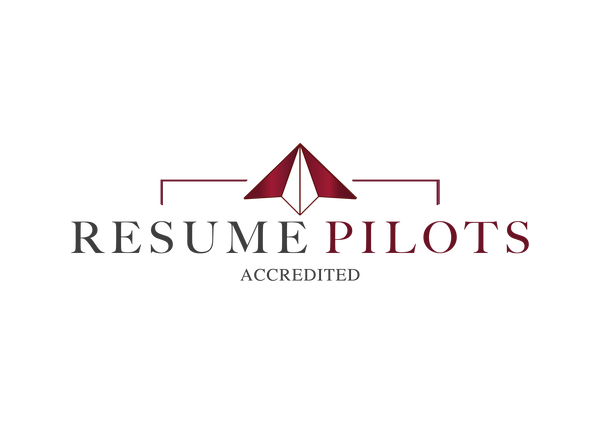
Your Brand Is Not Your Logo — It’s the Shortcut People Use to Decide If You’re Worth Their Time
Your Brand Is Not Your Logo — It’s the Shortcut People Use to Decide If You’re Worth Their Time
By Zoe, CEO, Resume Pilots
She had led three major turnarounds. She’d delivered $200M in cost efficiencies, stabilised a global division in crisis, mentored two future VPs, and was known internally as “the fixer.”
Yet when the succession planning list for COO quietly circulated, her name wasn’t on it.
Not because she wasn’t capable.
Not because she wasn’t respected.
But because beyond her immediate circle, she wasn’t known.
This isn’t just her story. It happens every day to high-performing executives who believe results are enough. They assume performance will speak for itself, but performance only speaks to those close enough to witness it. Outside that room, perception speaks louder.
And perception is brand.
Personal Branding Is Not Vanity — It’s Career Protection
Many executives recoil from the phrase personal brand. It sounds performative, self-promotional, even egotistical. Something “other” people do. But here’s the leadership truth:
Brand is not self-promotion. Brand is reputation at scale — the perception that travels further than your presence
In the US especially, where careers are mobile, succession is silent, and visibility determines influence, reputation is career insurance. If people don’t know how to describe you, they can’t decide to advance you.
When recruiters, investors, or board members search your name, what do they find? Evidence of leadership? Or an outdated résumé and a silent LinkedIn profile?
As Mel Robbins puts it:
“If you don’t control your narrative, someone else’s brain writes it for you”
The Neuroscience of Why Brand Comes Before Résumé
Before anyone reads a word about you, their brain has already formed an opinion. This isn’t philosophy. It’s neurology.
Here’s how leadership perception is processed, in under three seconds:
🧠 1. The Reptilian Brain – Safety Check
This is the most primitive part of the brain: No logic. No nuance. Unsophisticated. It makes binary decisions:
Safe or Unsafe. Familiar or Unfamiliar. Approach or Avoid…
If your presence, physical or digital, feels inconsistent, confusing, or unfamiliar, the reptilian brain doesn’t think “Interesting potential” It thinks “Risk. Avoid.”
❤️ 2. The Limbic System – Trust & Emotional Memory
This is where emotional patterns and reputations live.
If someone has heard good things about you; seen you referenced, quoted, endorsed, their limbic brain relaxes into trust before you walk into the room.
This is why a strong brand creates anticipatory credibility; people trust you before you speak.
🧾 3. The Neocortex – Logic & Justification
Only after trust is established does logic arrive. This is where résumés, credentials, and bios are processed; but only to justify the feeling already formed. We will use our Neocortex to find the logical evidence we need to support the decision that has already been made.
As neuroscientist Antonio Damasio wrote:
“We are not thinking machines that feel. We are feeling machines that think.”
➤ Which means:
Your achievements are judged after your brand, not before.
Your Bio Is the First Test of Brand
If your executive bio doesn’t immediately signal trust, clarity, and leadership, before you enter the conversation, we can help.
👉 Explore our Executive Bio Writing at Resume Pilots
The Corporate Problem: Attribution Bias
Inside large organisations, executives are unconsciously categorised. This is known as attribution bias, where your known identity (Finance. Ops. Legal. Delivery.) overshadows your potential.
- You become the fixer, not the strategist
- The executor, not the visionary
- Dependable, not board-ready
High performers without brand get typecast into operational lanes, while those with defined narratives are perceived as strategic leaders, even if results are equal. And sometimes when they are not…
A 2023 LinkedIn Executive Reputation Report found:
Executives with a visible leadership narrative were 4.5x more likely to be considered for cross-functional or strategic roles.
Translation: If you’re not defined, you’re assigned. And you’re not in charge of the assignment.
Reflection Exercise: The Three Descriptions Test
Choose three people in your world:
- A peer or colleague
- A senior leader or sponsor
- Someone outside your company (industry contact, recruiter)
Ask yourself silently:
If each introduced me in one sentence, would their descriptions match?
If one would call you “reliable,” another “operational,” another “unknown” - you don’t have a brand.
You have a reputation gap. And in corporate America, reputation gaps become promotion gaps.
Your Bio Should Close the Gap, Not Create It
Most executive bios read like job descriptions. We write bios designed for succession committees, PE partners, and board interviews.
🖋 Request your Executive Bio at Resume Pilots
Your Brand Is Being Built With or Without You
Executives sometimes say: “I’m not building a brand”
But you are. Every meeting, mention, memo, and LinkedIn search builds or erodes it.
Brand vs Branding:
|
Branding |
Brand |
|
What you post |
What they remember |
|
Content |
Character |
|
Presence |
Perception |
|
You speaking |
Others speaking about you |
If your influence disappears when you leave the room, you don’t have a brand. You have proximity. As we heard from Mel Robbins earlier: if you’re not building your brand, other people are building it in their mind.
If You Don’t Define Your Leadership Narrative, Someone Else Will
We turn complex leadership careers into board-ready narratives
🔍 Resume Pilots – Executive Bio Writing for Leaders Ready to Be Known
Setting Up Our Next Blog – From Performance to Positioning
Tomorrow, we move from awareness to architecture:
- The 5 components of a leadership brand
- How to translate career into clarity
- The assets every executive must control
Final Thoughts
You don’t need to become louder.
You need to become clearer.
Because in leadership, if you’re not known for something…
you’ll be overlooked for everything.
To find out more about the work we do at Resume Pilots, for C-Suite or aspiring C-Suite professionals, then visit www.resumepilots.com
If you would like to book a short call where you can ask questions and learn about our process, you can find a time to suit you with this link: https://www.resumepilots.com/pages/untitled
To get in touch with us, you can email us at team@resumepilots.com or visit our LinkedIn company page https://www.linkedin.com/company/resumepilots/

